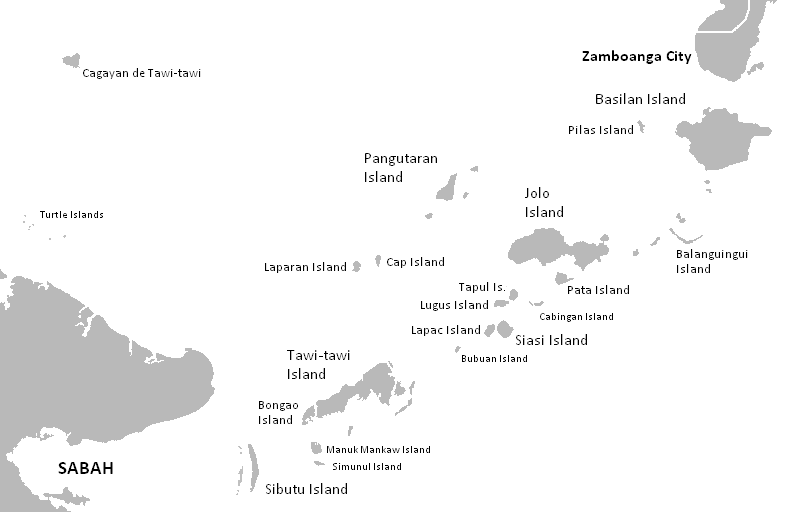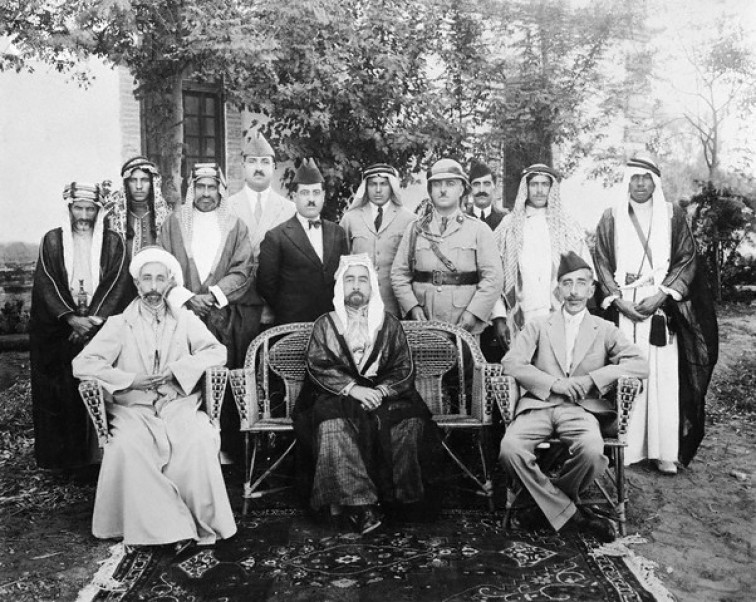|
Kamal Ud-Din Of Sulu
Kamal ud-Din () (reigned 1480 – 1505) was the second Hashemite Sultan of Sulu. The eldest son of his predecessor, Sharif ul-Hāshim, Kamal ud-Din became Sultan on the death of his father in 1480. During his reign, he appointed qadi to administer justice and oversaw the conversion of people in Luzon and the Visayas. He died in 1505 and is buried in a grave, marked by a stone slab, near to Buasa. He was succeeded by his son, Amir ul-Umara. See also * Sultans of Sulu Sultan (; ar, سلطان ', ) is a position with several historical meanings. Originally, it was an Arabic abstract noun meaning "strength", "authority", "rulership", derived from the verbal noun ', meaning "authority" or "power". Later, it c ... References Filipino datus, rajas and sultans 1505 deaths 15th-century monarchs in Asia Sultans of Sulu Year of birth unknown {{Royal-stub ... [...More Info...] [...Related Items...] OR: [Wikipedia] [Google] [Baidu] |
Sultan
Sultan (; ar, سلطان ', ) is a position with several historical meanings. Originally, it was an Arabic abstract noun meaning "strength", "authority", "rulership", derived from the verbal noun ', meaning "authority" or "power". Later, it came to be used as the title of certain rulers who claimed almost full sovereignty (i.e., not having dependence on any higher ruler) without claiming the overall caliphate, or to refer to a powerful governor of a province within the caliphate. The adjectival form of the word is "sultanic", and the state and territories ruled by a sultan, as well as his office, are referred to as a sultanate ( '. The term is distinct from king ( '), despite both referring to a sovereign ruler. The use of "sultan" is restricted to Muslim countries, where the title carries religious significance, contrasting the more secular ''king'', which is used in both Muslim and non-Muslim countries. Brunei and Oman are the only independent countries which retain the ti ... [...More Info...] [...Related Items...] OR: [Wikipedia] [Google] [Baidu] |
Sultanate Of Sulu
The Sultanate of Sulu (Tausug language, Tausūg: ''Kasultanan sin Sūg'', كاسولتانن سين سوڬ; malay language, Malay: ''Kesultanan Sulu''; fil, Sultanato ng Sulu; Chavacano: ''Sultanato de Sulu/Joló''; ar, سلطنة سولك) was a Muslim Sovereign state, state that ruled the Sulu Archipelago, parts of Mindanao and certain portions of Palawan in today's Philippines, alongside parts of present-day Sabah, North Kalimantan, North and East Kalimantan in north-eastern Borneo. The sultanate was founded either on 17 November 1405 or 1457 by Johore-born explorer and religious scholar Sharif ul-Hāshim of Sulu, Sharif ul-Hashim. ''Paduka Mahasari Maulana al Sultan Sharif ul-Hashim'' became his full regnal name, ''Sharif-ul Hashim'' is his abbreviated name. He settled in Buansa, Sulu. After the marriage of Abu Bakr and a local ''dayang-dayang'' (princess) Paramisuli, he founded the sultanate. The sultanate gained its independence from the Bruneian Empire in 1578. At i ... [...More Info...] [...Related Items...] OR: [Wikipedia] [Google] [Baidu] |
Sharif Ul-Hāshim Of Sulu
Sharif ul-Hashim (began reign 17 November 1405) was the regal name of Sharif Abubakar Abirin Al-Hashmi. He was an ArabSulu Genealogy website accessed on 23 November 2010. - explorer and the founder of the . He assumed the political and spiritual leadership of the realm, and was given the title ''Sultan' ... [...More Info...] [...Related Items...] OR: [Wikipedia] [Google] [Baidu] |
Amir Ul-Umara Of Sulu
Emir (; ar, أمير ' ), sometimes transliterated amir, amier, or ameer, is a word of Arabic origin that can refer to a male monarch, aristocrat, holder of high-ranking military or political office, or other person possessing actual or ceremonial authority. The title has a long history of use in the Arab World, East Africa, West Africa, Central Asia, and the Indian subcontinent. In the modern era, when used as a formal monarchical title, it is roughly synonymous with " prince", applicable both to a son of a hereditary monarch, and to a reigning monarch of a sovereign principality, namely an emirate. The feminine form is emira ( '), a cognate for " princess". Prior to its use as a monarchical title, the term "emir" was historically used to denote a "commander", "general", or "leader" (for example, Amir al-Mu'min). In contemporary usage, "emir" is also sometimes used as either an honorary or formal title for the head of an Islamic, or Arab (regardless of religion) org ... [...More Info...] [...Related Items...] OR: [Wikipedia] [Google] [Baidu] |
Sunni Islam
Sunni Islam () is the largest branch of Islam, followed by 85–90% of the world's Muslims. Its name comes from the word '' Sunnah'', referring to the tradition of Muhammad. The differences between Sunni and Shia Muslims arose from a disagreement over the succession to Muhammad and subsequently acquired broader political significance, as well as theological and juridical dimensions. According to Sunni traditions, Muhammad left no successor and the participants of the Saqifah event appointed Abu Bakr as the next-in-line (the first caliph). This contrasts with the Shia view, which holds that Muhammad appointed his son-in-law and cousin Ali ibn Abi Talib as his successor. The adherents of Sunni Islam are referred to in Arabic as ("the people of the Sunnah and the community") or for short. In English, its doctrines and practices are sometimes called ''Sunnism'', while adherents are known as Sunni Muslims, Sunnis, Sunnites and Ahlus Sunnah. Sunni Islam is sometimes referred ... [...More Info...] [...Related Items...] OR: [Wikipedia] [Google] [Baidu] |
Hashemite
The Hashemites ( ar, الهاشميون, al-Hāshimīyūn), also House of Hashim, are the royal family of Jordan, which they have ruled since 1921, and were the royal family of the kingdoms of Hejaz (1916–1925), Syria (1920), and Iraq (1921–1958). The family had ruled the city of Mecca continuously from the 10th century, frequently as vassals of outside powers, and were given the thrones of the Hejaz, Syria, Iraq, and Jordan following their World War I alliance with the British Empire; this arrangement became known as the "Sharifian solution". The family belongs to the Dhawu Awn, one of the branches of the Ḥasanid Sharifs of Mecca, also referred to as Hashemites. Their eponymous ancestor is traditionally considered to be Hashim ibn Abd Manaf, great-grandfather of the Islamic prophet Muhammad. The Ḥasanid Sharifs of Mecca (from whom the Hashemite royal family is directly descended), including the Hashemites' ancestor Qatadah ibn Idris, were Zaydī Shīʿas until the l ... [...More Info...] [...Related Items...] OR: [Wikipedia] [Google] [Baidu] |
Qadi
A qāḍī ( ar, قاضي, Qāḍī; otherwise transliterated as qazi, cadi, kadi, or kazi) is the magistrate or judge of a '' sharīʿa'' court, who also exercises extrajudicial functions such as mediation, guardianship over orphans and minors, and supervision and auditing of public works. History The term ''qāḍī'' was in use from the time of Muhammad during the early history of Islam, and remained the term used for judges throughout Islamic history and the period of the caliphates. While the '' muftī'' and '' fuqaha'' played the role in elucidation of the principles of Islamic jurisprudence (''Uṣūl al-Fiqh'') and the Islamic law (''sharīʿa''), the ''qāḍī'' remained the key person ensuring the establishment of justice on the basis of these very laws and rules. Thus, the ''qāḍī'' was chosen from amongst those who had mastered the sciences of jurisprudence and law. The Abbasid caliphs created the office of "chief ''qāḍī''" (''qāḍī al-quḍāh''), who ... [...More Info...] [...Related Items...] OR: [Wikipedia] [Google] [Baidu] |
Luzon
Luzon (; ) is the largest and most populous island in the Philippines. Located in the northern portion of the Philippines archipelago, it is the economic and political center of the nation, being home to the country's capital city, Manila, as well as Quezon City, the country's most populous city. With a population of 64 million , it contains 52.5% of the country's total population and is the fourth most populous island in the world. It is the 15th largest island in the world by land area. ''Luzon'' may also refer to one of the three primary island groups in the country. In this usage, it includes the Luzon mainland, the Batanes and Babuyan groups of islands to the north, Polillo Islands to the east, and the outlying islands of Catanduanes, Marinduque and Mindoro, among others, to the south. The islands of Masbate, Palawan and Romblon are also included, although these three are sometimes grouped with another of the island groups, the Visayas. Etymology The name ''Luz ... [...More Info...] [...Related Items...] OR: [Wikipedia] [Google] [Baidu] |
Visayas
The Visayas ( ), or the Visayan Islands (Bisayan languages, Visayan: ''Kabisay-an'', ; tl, Kabisayaan ), are one of the three Island groups of the Philippines, principal geographical divisions of the Philippines, along with Luzon and Mindanao. Located in the central part of the archipelago, it consists of several islands, primarily surrounding the Visayan Sea, although the Visayas are also considered the northeast extremity of the entire Sulu Sea. Its inhabitants are predominantly the Visayan peoples. The major islands of the Visayas are Panay, Negros (Philippines), Negros, Cebu Island, Cebu, Bohol Island, Bohol, Leyte and Samar. The region may also include the provinces of Palawan, Romblon, and Masbate whose populations identify as Visayan and whose languages are more closely related to other Visayan languages than to the major languages of Luzon. There are three administrative Regions of the Philippines, regions in the Visayas: Western Visayas (pop. 7.9 million), Central V ... [...More Info...] [...Related Items...] OR: [Wikipedia] [Google] [Baidu] |
List Of Sultans Of Sulu
This is a list of sultans and later claimants of the former Sulu sultanate. The Royal House of Sulu is a royal house of the Sulu Archipelago in the Philippines. Historically the head of the Sultanate of Sulu, the position of sultan today carries with it no political powers or privileges and is mostly a cultural figure. There are currently several claimants to the sultanship after the death of the last recognized sultan, Mohammed Mahakuttah A. Kiram. Pre-sultanate kings Sulu was divided into three kingdoms before the sultanate arose. The descendants of Paduka Pahala, through his two sons, live in Dezhou#Sulu Royal Family, Dezhou in China have the surnames An and Wen. Sharif ul-Hāshim of Sulu arrived in Sulu and married the princess Dayang-dayang Paramisuli of the previous royal family, founding the Sulu sultanate. List of sultans List of sultans from 1405 to 1936 The following list details the holders of the title of sultan between 1405 and 1936. List of sultans fro ... [...More Info...] [...Related Items...] OR: [Wikipedia] [Google] [Baidu] |
Filipino Datus, Rajas And Sultans
Filipino may refer to: * Something from or related to the Philippines ** Filipino language, standardized variety of 'Tagalog', the national language and one of the official languages of the Philippines. ** Filipinos, people who are citizens of the Philippines or are of Filipino descent. Other uses * Filipinos (snack food), branded cookies manufactured in Europe See also * * * Filipinas (other) Filipinas may refer to: * ''Filipinas, letra para la marcha nacional'', the Spanish poem by José Palma that eventually became the Filipino national anthem. * The original Spanish name, and also used in different Philippines languages including F ... {{disambiguation Language and nationality disambiguation pages ... [...More Info...] [...Related Items...] OR: [Wikipedia] [Google] [Baidu] |


.jpg)



